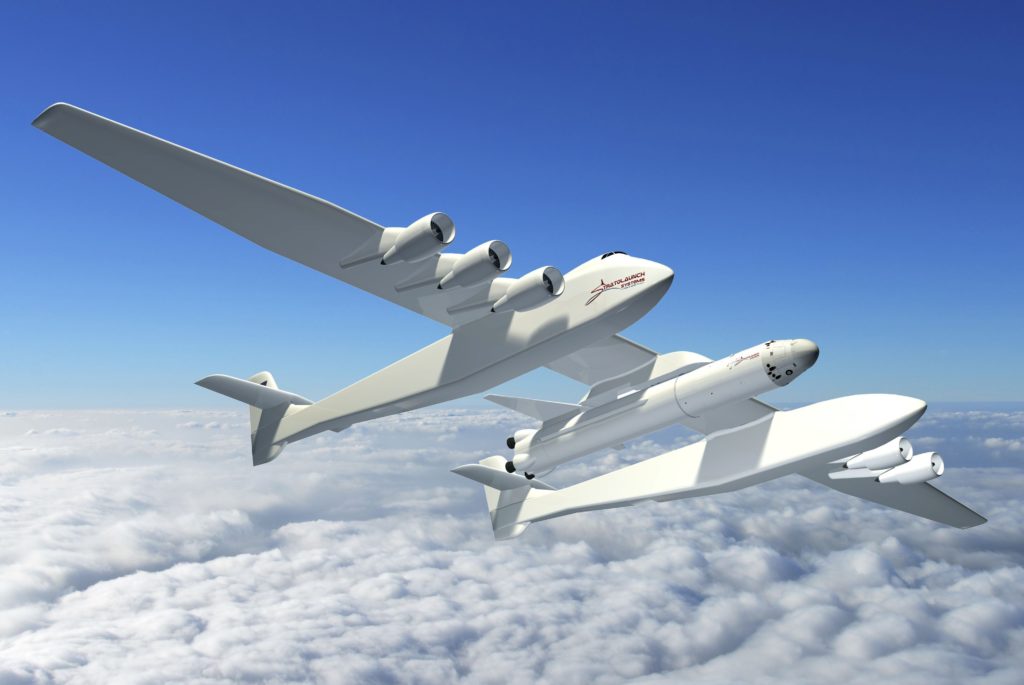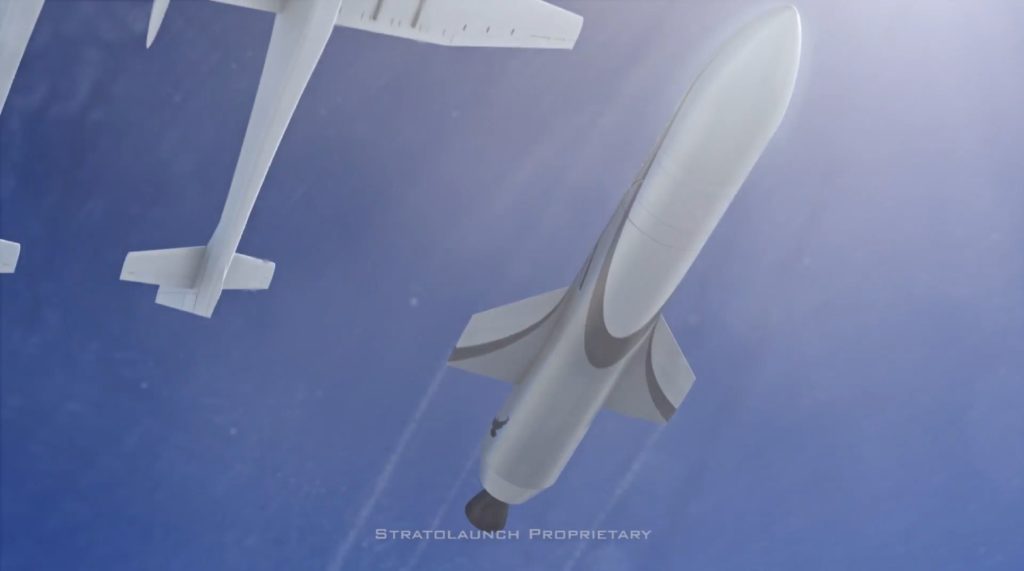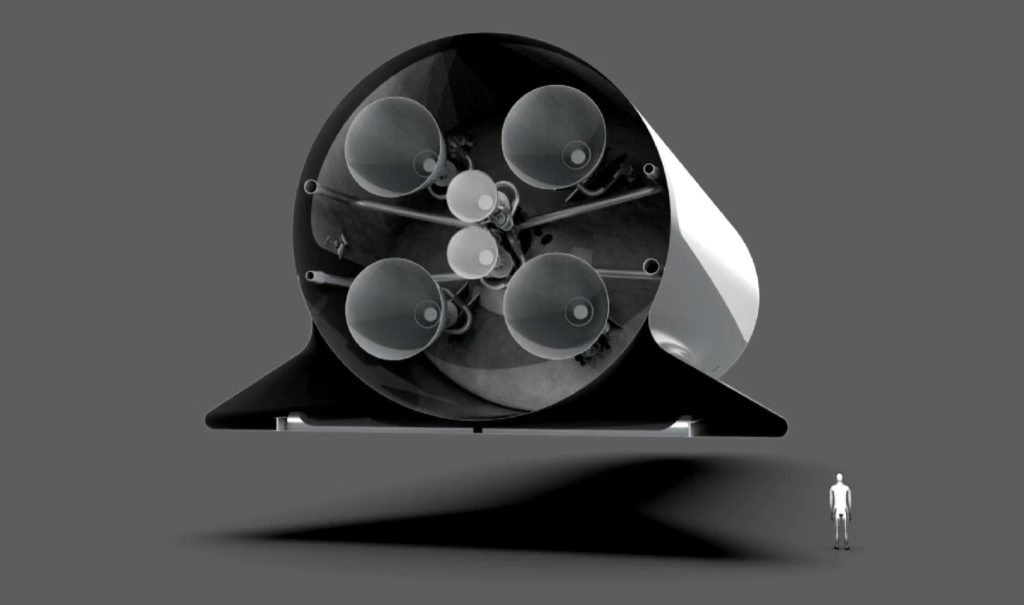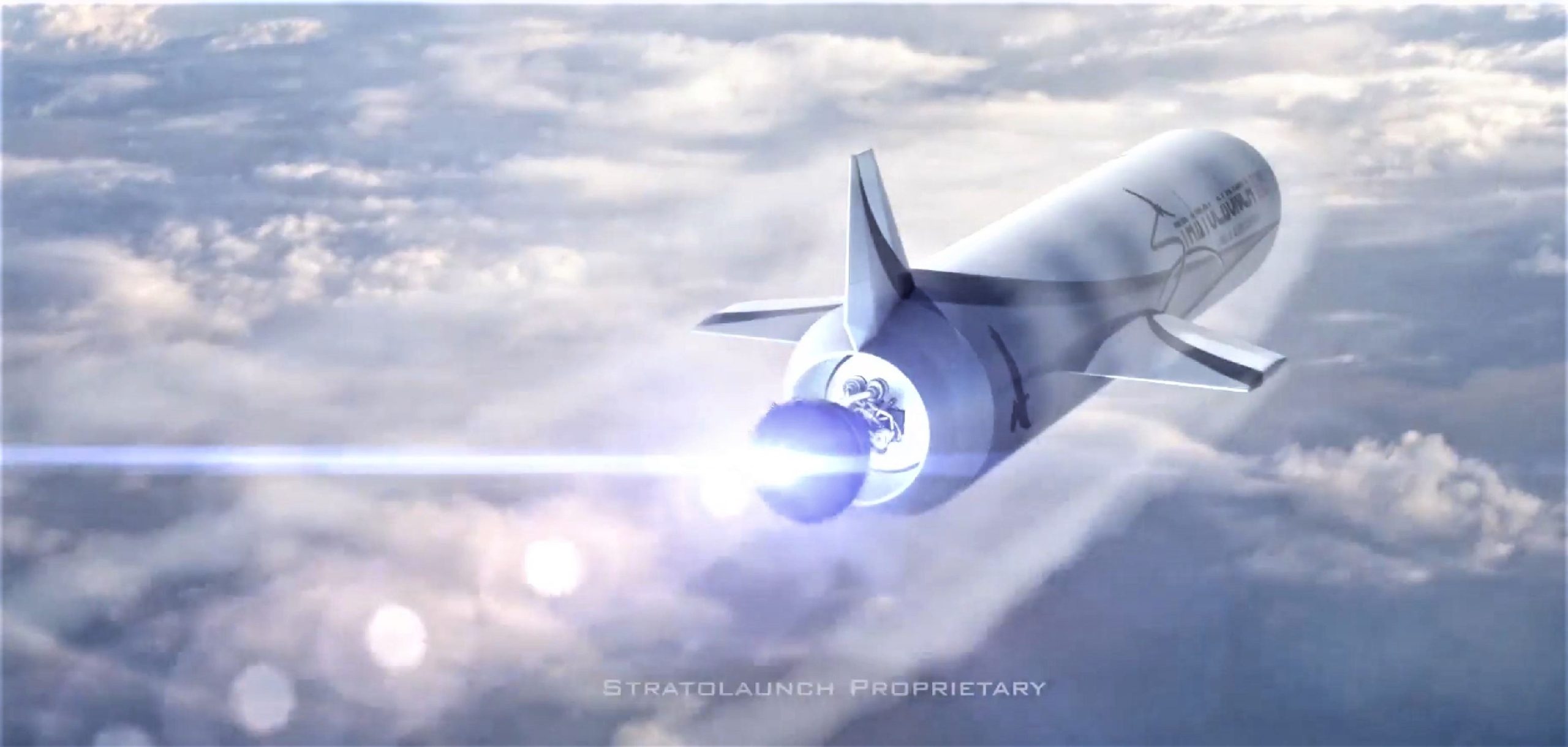
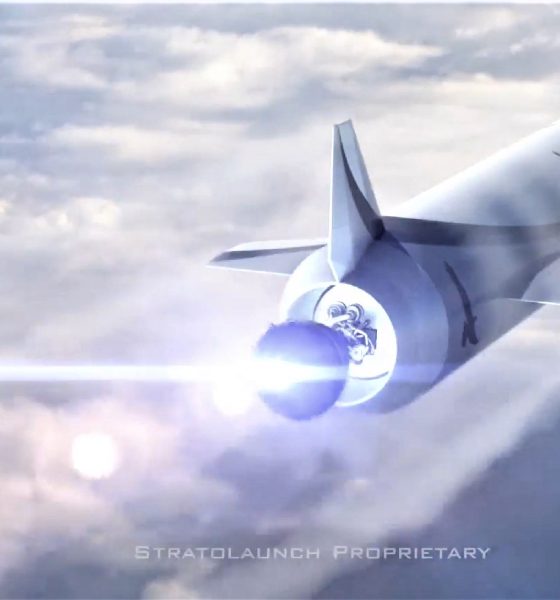
News
Ex-SpaceX engine expert to help design rockets built for launch on world’s largest jet
Stratolaunch, an aerospace company funded by Microsoft-made billionaire Paul Allen to build the world’s largest flightworthy aircraft, has announced a decision to build its own liquid-fueled rockets, to be air-launched from the aforementioned mega-plane.
Targeting an inaugural launch of the first version of the rocket – currently nicknamed “Kraken” – as early as 2022, Stratolaunch has chosen Jeff Thornburg, formerly SpaceX’s Vice President of Propulsion Engineering and the father of the company’s Mars-focused Raptor engine, to lead its foray into in-house rocket propulsion development and manufacturing.
Stratolaunch has confirmed what most people have long speculated: it’s developing its own launch vehicles for its air-launch system, including a reusable space plane that could eventually carry people. pic.twitter.com/nF9lKVe4xk
— Jeff Foust (@jeff_foust) August 20, 2018
But first: building the world’s largest aircraft
Stratolaunch’s first task at hand, however, is to begin flight-testing the largest (hopefully) operational aircraft in history, a prerequisite for the company’s longer-term orbital rocket and spaceplane aspirations. Nicknamed “Roc” after a mythical (and fictional) bird so large it could carry an elephant, the plane certainly lives up to its namesake. Featuring a full six of the same engines that power Boeing’s once-record-breaking 747 airliner and a wingspan that could easily fit three smaller 737 airliners with room to spare, it is genuinely difficult (if not impossible) to successfully convey the sheer scale of Roc outside of witnessing it in person.
Stationed in California’s Mojave Desert, the aircraft’s one and only copy is, for the most part, completed and has spent the brunt of 2018 conducting runway taxi tests, hopefully culminating in an inaugural flight test later this year or early next year. Designed to lift orbital-class rockets weighing as much as 250 metric tons (550,000 lb) to an altitude of at least 9100 meters (30,000 feet), the primary benefit of using aircraft as launch platforms derives from the simple fact that the atmospheric density at 30,000 feet is more than three times less than that at sea level. Similar to aircraft, rocket performance dramatically improves as atmospheric density decreases: less atmosphere means lower drag and pressure.
Rockets that launch from sea-level have to grapple with the difficulties of Earth’s relatively thick atmosphere at that height, with major launch events like “Max-Q” being big concerns almost solely because the dense air exerts major forces on launch vehicles and demands extreme measures like throttling down booster engines (very inefficient) and optimizing structures for aerodynamic efficiency despite the fact that rockets spend very little time operating in a significant atmosphere.
A launch pad without a rocket (sort of)
However, the simple fact of the matter is that billionaire Paul Allen’s colossal aircraft essentially does not have a single air-launched rocket in the world that can properly take advantage of its capabilities. Originally sized and designed with an air-launched version of SpaceX’s Falcon 9 in mind, that relationship folded amicably after roughly a year (2012), at which point SpaceX realized it would need to almost completely redesign a unique variant of Falcon 9. Your author will readily admit that they have admired the insanity of such a massive plane while still severely doubting its practical utility.
Thankfully, it appears that Allen is adamantly opposed to the idea that Stratolaunch is some silly whim to build the world’s largest plane. Rather, he is exceptionally reserved and pragmatic when discussing the aerial launch platform, according to a recent and extensive interview by Wired Magazine’s Steven Levy.
“Allen isn’t one to show exuberance, and when he speaks about the plane he focuses on its future utility. ‘When you see that giant plane, it’s a little nutty,’ he says. ‘And you don’t build it unless you’re very serious, not only about wanting to see the plane fly but to see it fulfill its purpose. Which is getting vehicles in orbit.’ – Paul Allen, 2018
- Stratolaunch’s Roc shown with a triplet of Orbital ATK Pegasus XL rockets. (Vulcan Space)
- Back in 2012, SpaceX briefly entertained the idea of a Falcon 9 variant optimized for air-launch, potentially including crew rating the rocket down the road. (Stratolaunch/Dynetics)
- The Roc is inconceivably vast. (Stratolaunch)
Currently, Orbital ATK’s (now Northrop Grumman Innovation Systems) air-launched Pegasus XL rocket is the only “customer” in the world that can realistically use Stratolaunch as a launch platform, not exactly an impressive or sustainable launch vehicle with a maximum performance of less than 450 kg (~1000 lbs) to low Earth orbit for an incredible ~$40 million per (expendable) flight.
To answer that call and ensure Stratolaunch’s utility, the company reportedly began seriously considering its own in-house expendable and reusable rockets and propulsion systems sometime in 2016, plans that have since grown concrete and been publicly embedded into Stratolaunch’s overarching mission. Nicknamed “Kraken” after the mythical sea monster, the company hopes to develop an initially expendable rocket system capable of launching 3400 – 6000 kg (~7500 – 13250 lbs) into low Earth orbit with single booster and triple booster variants. Further down the line, Stratolaunch is eyeing the design and production of a fully and rapidly reusable orbital spaceplane, potentially including a version that would carry astronauts into space.
- A concept video produced by Stratolaunch shows the Roc launching a Kraken rocket. (Stratolaunch, via Wired)
- A concept video produced by Stratolaunch shows the Roc launching a Kraken rocket. (Stratolaunch, via Wired)
- A concept video produced by Stratolaunch shows the Roc launching a Kraken rocket. (Stratolaunch, via Wired)
- SpaceX’s subscale Raptor engine has completed more than 1200 seconds of testing in less than two years. (SpaceX)
- BFS (circa 2017) shows off its complement of SL and Vacuum Raptor engines. SpaceX is moving back to something similar to this. (SpaceX)
Normally, one might simply roll their eyes at yet another startup touting small(ish) expendable rockets with first launches no earlier than the early 2020s – the market is getting to be absurdly and impossibly overcrowded at this point. However, Stratolaunch differs for one fundamental and reason: they have placed ex-SpaceX propulsion executive and expert Jeff Thornburg at the helm of the company’s freshly public rocket propulsion wing. While at SpaceX, Mr. Thornburg spent all but one of his five years with the company (2011-2015) single-mindedly focused on the development and engineering of all aspects of the Raptor rocket engine, a next-generation propulsion system designed to enable SpaceX’s sustainable colonization of Mars.
Raptor is an exceptional rocket engine thanks in no small part to Thornburg’s brilliance as a propulsion engineer, and that same brilliance and half-decade of experience at the most successful rocket startup in existence could ultimately prove a massive boon for Stratolaunch’s otherwise interesting but unexceptional expendable rocket concepts.
Put simply, under Jeff Thornburg’s direction and with access to founder Paul Allen’s considerable wealth, Stratolaunch is undoubtedly worth keeping a close eye in the future, both far and near.
For prompt updates, on-the-ground perspectives, and unique glimpses of SpaceX’s rocket recovery fleet check out our brand new LaunchPad and LandingZone newsletters!

Elon Musk
Starlink passes 9 million active customers just weeks after hitting 8 million
The milestone highlights the accelerating growth of Starlink, which has now been adding over 20,000 new users per day.

SpaceX’s Starlink satellite internet service has continued its rapid global expansion, surpassing 9 million active customers just weeks after crossing the 8 million mark.
The milestone highlights the accelerating growth of Starlink, which has now been adding over 20,000 new users per day.
9 million customers
In a post on X, SpaceX stated that Starlink now serves over 9 million active users across 155 countries, territories, and markets. The company reached 8 million customers in early November, meaning it added roughly 1 million subscribers in under seven weeks, or about 21,275 new users on average per day.
“Starlink is connecting more than 9M active customers with high-speed internet across 155 countries, territories, and many other markets,” Starlink wrote in a post on its official X account. SpaceX President Gwynne Shotwell also celebrated the milestone on X. “A huge thank you to all of our customers and congrats to the Starlink team for such an incredible product,” she wrote.
That growth rate reflects both rising demand for broadband in underserved regions and Starlink’s expanding satellite constellation, which now includes more than 9,000 low-Earth-orbit satellites designed to deliver high-speed, low-latency internet worldwide.
Starlink’s momentum
Starlink’s momentum has been building up. SpaceX reported 4.6 million Starlink customers in December 2024, followed by 7 million by August 2025, and 8 million customers in November. Independent data also suggests Starlink usage is rising sharply, with Cloudflare reporting that global web traffic from Starlink users more than doubled in 2025, as noted in an Insider report.
Starlink’s momentum is increasingly tied to SpaceX’s broader financial outlook. Elon Musk has said the satellite network is “by far” the company’s largest revenue driver, and reports suggest SpaceX may be positioning itself for an initial public offering as soon as next year, with valuations estimated as high as $1.5 trillion. Musk has also suggested in the past that Starlink could have its own IPO in the future.
News
NVIDIA Director of Robotics: Tesla FSD v14 is the first AI to pass the “Physical Turing Test”
After testing FSD v14, Fan stated that his experience with FSD felt magical at first, but it soon started to feel like a routine.

NVIDIA Director of Robotics Jim Fan has praised Tesla’s Full Self-Driving (Supervised) v14 as the first AI to pass what he described as a “Physical Turing Test.”
After testing FSD v14, Fan stated that his experience with FSD felt magical at first, but it soon started to feel like a routine. And just like smartphones today, removing it now would “actively hurt.”
Jim Fan’s hands-on FSD v14 impressions
Fan, a leading researcher in embodied AI who is currently solving Physical AI at NVIDIA and spearheading the company’s Project GR00T initiative, noted that he actually was late to the Tesla game. He was, however, one of the first to try out FSD v14.
“I was very late to own a Tesla but among the earliest to try out FSD v14. It’s perhaps the first time I experience an AI that passes the Physical Turing Test: after a long day at work, you press a button, lay back, and couldn’t tell if a neural net or a human drove you home,” Fan wrote in a post on X.
Fan added: “Despite knowing exactly how robot learning works, I still find it magical watching the steering wheel turn by itself. First it feels surreal, next it becomes routine. Then, like the smartphone, taking it away actively hurts. This is how humanity gets rewired and glued to god-like technologies.”
The Physical Turing Test
The original Turing Test was conceived by Alan Turing in 1950, and it was aimed at determining if a machine could exhibit behavior that is equivalent to or indistinguishable from a human. By focusing on text-based conversations, the original Turing Test set a high bar for natural language processing and machine learning.
This test has been passed by today’s large language models. However, the capability to converse in a humanlike manner is a completely different challenge from performing real-world problem-solving or physical interactions. Thus, Fan introduced the Physical Turing Test, which challenges AI systems to demonstrate intelligence through physical actions.
Based on Fan’s comments, Tesla has demonstrated these intelligent physical actions with FSD v14. Elon Musk agreed with the NVIDIA executive, stating in a post on X that with FSD v14, “you can sense the sentience maturing.” Musk also praised Tesla AI, calling it the best “real-world AI” today.
News
Tesla AI team burns the Christmas midnight oil by releasing FSD v14.2.2.1
The update was released just a day after FSD v14.2.2 started rolling out to customers.

Tesla is burning the midnight oil this Christmas, with the Tesla AI team quietly rolling out Full Self-Driving (Supervised) v14.2.2.1 just a day after FSD v14.2.2 started rolling out to customers.
Tesla owner shares insights on FSD v14.2.2.1
Longtime Tesla owner and FSD tester @BLKMDL3 shared some insights following several drives with FSD v14.2.2.1 in rainy Los Angeles conditions with standing water and faded lane lines. He reported zero steering hesitation or stutter, confident lane changes, and maneuvers executed with precision that evoked the performance of Tesla’s driverless Robotaxis in Austin.
Parking performance impressed, with most spots nailed perfectly, including tight, sharp turns, in single attempts without shaky steering. One minor offset happened only due to another vehicle that was parked over the line, which FSD accommodated by a few extra inches. In rain that typically erases road markings, FSD visualized lanes and turn lines better than humans, positioning itself flawlessly when entering new streets as well.
“Took it up a dark, wet, and twisty canyon road up and down the hill tonight and it went very well as to be expected. Stayed centered in the lane, kept speed well and gives a confidence inspiring steering feel where it handles these curvy roads better than the majority of human drivers,” the Tesla owner wrote in a post on X.
Tesla’s FSD v14.2.2 update
Just a day before FSD v14.2.2.1’s release, Tesla rolled out FSD v14.2.2, which was focused on smoother real-world performance, better obstacle awareness, and precise end-of-trip routing. According to the update’s release notes, FSD v14.2.2 upgrades the vision encoder neural network with higher resolution features, enhancing detection of emergency vehicles, road obstacles, and human gestures.
New Arrival Options also allowed users to select preferred drop-off styles, such as Parking Lot, Street, Driveway, Parking Garage, or Curbside, with the navigation pin automatically adjusting to the ideal spot. Other refinements include pulling over for emergency vehicles, real-time vision-based detours for blocked roads, improved gate and debris handling, and Speed Profiles for customized driving styles.

